Cosmos Magazine is an award-winning literary science magazine, published in Australia but with a global reach. Cosmos Magazine presents the exciting world of science in a way that everyone can enjoy, with beautiful pictures and clear explanations of the latest developments. Discover the universe around you and what makes it tick.
How do we know this is an animal?
Firm favourites • OUR HIGHLIGHTS OF THE LAST FEW MONTHS
BEHIND THE SCENES
From the Editors
Cosmos Magazine
Meet Australia’s largest dinosaur • Massive plant-eater from south-west Queensland has just stomped into the record books.
How to think when you don’t have a brain • Even a form of brainless slime mould can make decisions about its next venture. What can it teach humans?
ELECTRICITY FROM SWEATY FINGERTIPS? • This device takes power from your sweat while you sleep.
Puppies born ready to communicate with people • It’s in a dog’s genes to interact with humans.
FOCUS: AI
Disappearing ancient Indonesian rock art • Cave weathering is accelerating in pace with climate change, study finds.
THE QUANTUM MICROSCOPE REVOLUTION IS HERE • New entanglement-based sensor surpasses light-based microscopes.
Alliance between plants and fungi led to life on land • The symbiotic relationship allows them to share fats.
CELL LINES OF EUROPEAN DESCENT IS A RESEARCH BIAS • Scientists say pre-clinical cellular research needs to be diversified.
Slow rotation = life as we know it? • Long days may have caused evolution’s slow pace.
Sea level rise reduces volcanic eruptions • Santorini erupts when water levels are low.
TINY SENSORS SOLVE SNAIL SURVIVAL MYSTERY • Miniature computers fixed to snail shells.
First light detected from behind a black hole • X-rays bouncing off a black hole’s disc confirm Einstein’s predictions.
How to give a Neanderthal a blood transfusion • Genetic study of blood types reveals connection between human ancestors and Indigenous Australians.
Insight deep into Mars
NO OVARIES REQUIRED: VIABLE EGGS GROWN IN A DISH
Super-strength spider silk made by bacteria • A new bacteria engineered to produce fibre is as tough as steel.
COULD YOU LIVE TO 150? • A new method to determine biological age suggests maximum human lifespan.
LOOKING BACK
Catalysts can change the world • Stepping towards a sustainable world is possible, Thomas Maschmeyer argues, if you’re clever with chemistry.
Seeing cancer through different eyes • When we can learn to apply AI to the tsunami of data currently collected, we can revolutionise the treatment of cancer, writes Mitra Safavi-Naeini.
AURORA traditions of the First AUSTRALIANS • The Southern Lights of the Aurora Australis are writ large in the storytelling traditions of Indigenous Australians, write Krystal De Napoli and Duane Hamacher.
Fantastically elusive birds and how to find them • The fledgling discipline of ecoacoustics has added a remarkable diagnostic tool to field biology: a valid and reliable way to prove the absence of our most secretive species. JOHN BIRMINGHAM tunes in.
WIRED FOR SOUND: THE A2O
MESSAGE IN A BOTTLE • Messenger RNA technology, so long in the wings, has leapt from understudy to main act. Its technology is deceptively simple, and as MANUELA CALLARI reports, its potential goes well beyond our current COVID predicament into some of our most prevalent diseases, from the flu to heart disease and even cancer.
SPECIAL DELIVERY: HOW mRNA TECHNOLOGY WORKS AT A CELLULAR LEVEL
A VACCINE FOR PLANTS
CAN YOU MEND A BROKEN HEART?
TO EVERY PATIENT THEIR OWN mRNA CANCER VACCINE
INDIVIDUALISED...
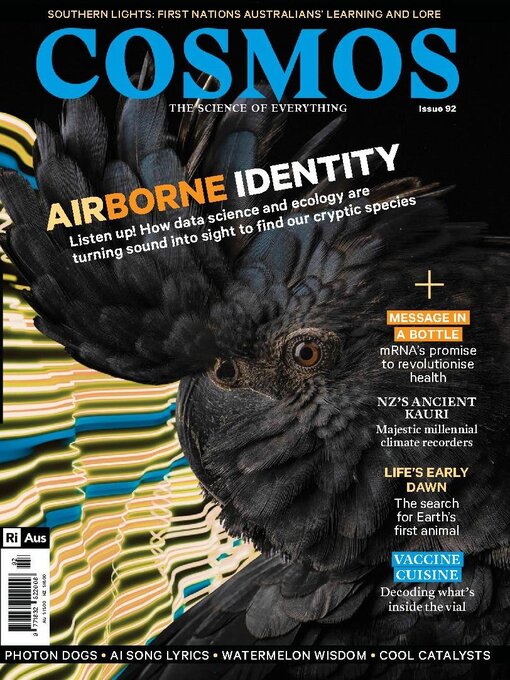
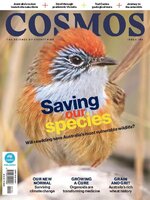 Issue 104
Issue 104
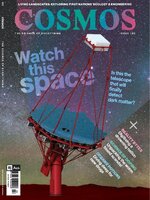 Issue 103
Issue 103
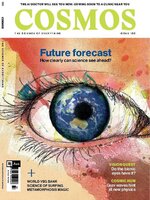 Issue 102
Issue 102
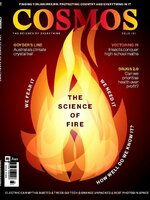 Issue 101
Issue 101
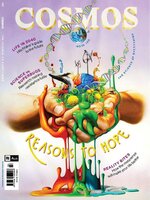 Issue 100
Issue 100
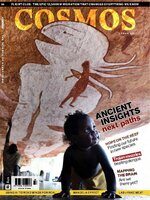 Issue 99
Issue 99
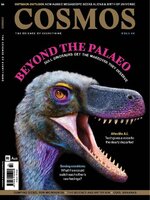 Issue 98
Issue 98
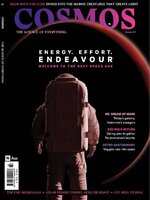 Issue 97
Issue 97
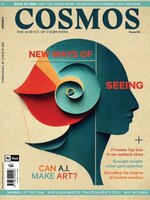 Issue 96
Issue 96
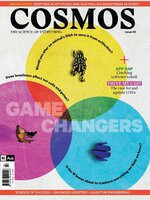 Issue 95
Issue 95
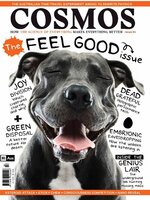 Issue 94
Issue 94
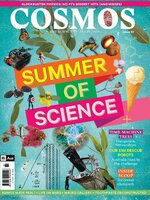 Issue 93
Issue 93
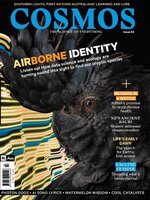 Issue 92
Issue 92
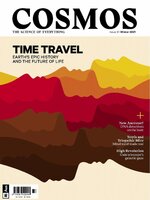 Issue 91
Issue 91
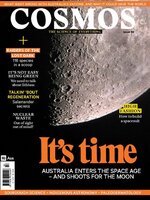 Issue 90
Issue 90
